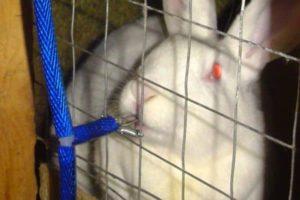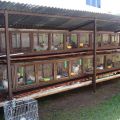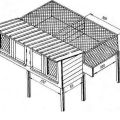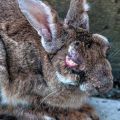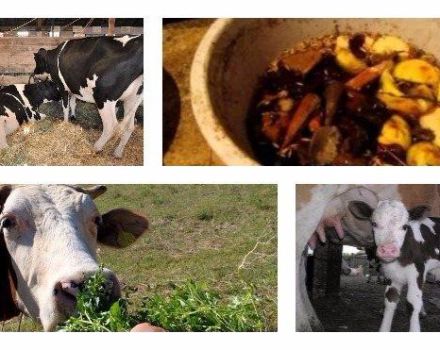Rules for the care and maintenance of dwarf rabbits at home
Dwarf (decorative) rabbits - a set of breeds of rabbits bred for indoor keeping. The animals are of a docile nature and small size, which allows you to create comfortable living conditions, both in your own house and in a city apartment. Rabbits are trainable, tray-trained and able to become full members of a loving and caring family.
Popular breeds of dwarf rabbits
All decorative representatives bred for keeping in apartments and houses belong to dwarf varieties of rabbits. Such animals are lightweight (up to 2.5 kilograms), the length of the coat may vary.
The most popular breeds include:
- Lop-eared ram.
- Dwarf Rex.
- Dwarf fox rabbit.
- Angora dwarf rabbit.
- Dwarf hotot.
- Japanese dwarf rabbit.
- Minilop.
- Dwarf hare.
- Hermelin.
- Dutch (Danish or Dutch) dwarf rabbit.
- Lion-headed rabbit.
Currently, when buying a decorative rabbit, a person can get acquainted with representatives of more than 60 breeds, differing in the length of the ears (from 5 to 20 centimeters), body size (from 700 grams to 3 kilograms) and other parameters.
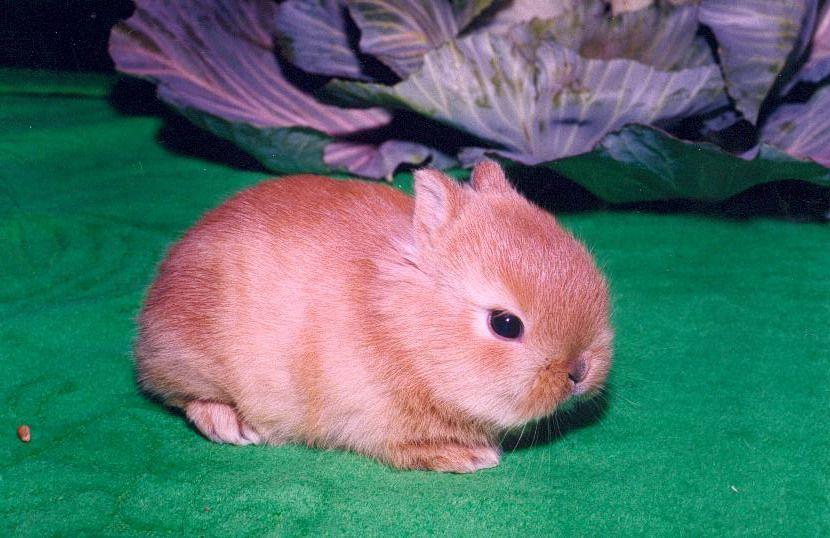
Life span
The average life span of a decorative rabbit can vary from 6 to 11 years, depending on the conditions of keeping and heredity.
How to increase your rabbit's lifespan:
- Before buying, read the pedigree of the animal and reviews from other buyers. Frequent inbreeding or non-compliance with breeding standards can lead to the appearance of severe hereditary diseases and the rapid death of the ward.
- Protect from physical injuries and infectious diseases, contact your veterinarian promptly.
- Observe the maintenance standards, monitor the diet and the state of the rabbit.
- Do not restrict activity.
- Communicate, do not leave the animal alone for a long time.
- Vaccination and sterilization in a timely manner.
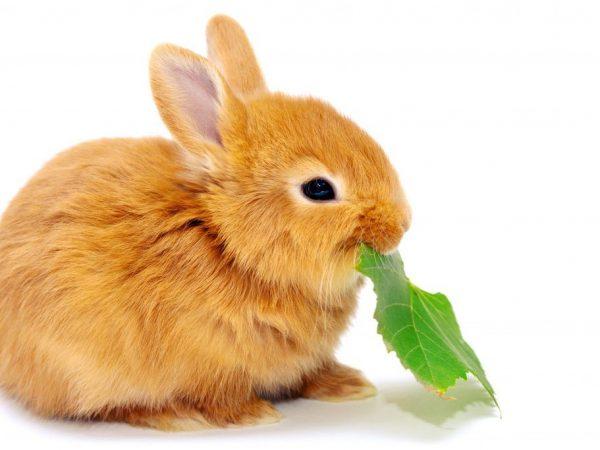
Keeping in a small cage, improper diet and lack of communication lead to imminent death, as well as infectious diseases.
Selection features
Choosing your first crawl, like any other animal, can seem daunting. However, there are certain rules that increase the guarantee of acquiring a healthy animal. Rules for purchasing a rabbit:
- Choose a cattery with good reviews and extensive experience in breeding animals. From the responsible seller, you can get acquainted with the pedigree, veterinary passport and certificates of medical procedures performed (sterilization, vaccinations, treatment for fleas and worms).
- Do not take rabbits in markets or advertisements.
- Exclude the acquisition of rabbits, whose age is less than six months.
- The eyes of the animal should be clean, breathing - no wheezing, hair - dense, no bald spots, ears - clean, without signs of tick-borne infection.
- Decide on the sex and breed in advance, familiarize yourself with the characteristics.

When purchasing an animal "off hand" the least problem is buying an ordinary rabbit. Buying at pet stores is also discouraged due to the risk of getting a sick, old animal, or a pregnant female.
Rules for care and maintenance at home
Rabbits are clean animals, easily accustomed to the house and tray. It is important to pay attention to the size of the enclosure, good nutrition and protection from diseases in order to provide the animal with decent conditions.
House arrangement
The preparation of the house and the aviary is carried out in advance, before the purchase of the animal. This is necessary for the comfortable movement of the animal to a new territory and providing everything necessary in the apartment. Aviary features:
- The size of the cage should be 5 times the size of the rabbit or more.
- Plastic pallet.
- Unpainted rods.
- The aviary should have a covered house, a tray, drinkers, feeders for different types of food, a manger for hay, toys, and replaceable bedding (change after 1 day).
- The cage should be kept away from direct sunlight and drafts.
- At a room temperature above +19 degrees Celsius, bottles with ice should be placed in the aviary, and the ward's ears should be regularly wiped with a damp cloth.

In the case of keeping same-sex, unsterilized rabbits, it is better to separate the animals, as they will actively mark the territory.
What to feed
Like other herbivores, dwarf rabbits are prone to constant chewing and frequent food intake. For full development and good health, an animal needs a well-formed diet with all the necessary substances.
The rabbit's daily menu consists of:
- 150-200 grams of hay (8% fresh grass and cereals);
- 200-250 grams of fresh, crushed vegetables (carrots, broccoli, rutabagas, cauliflower, cucumbers, radishes);
- fruit in the amount of 1 tablespoon for 2 days (bananas, apples, pears, raisins, dried apricots);
- ready-made feed in the amount of 3% of the rabbit weight;
- salt in an amount of 0.5% of the total mass of food (you can spray hay with a salty solution);
- vitamin supplements after checking the dosage with the veterinarian.
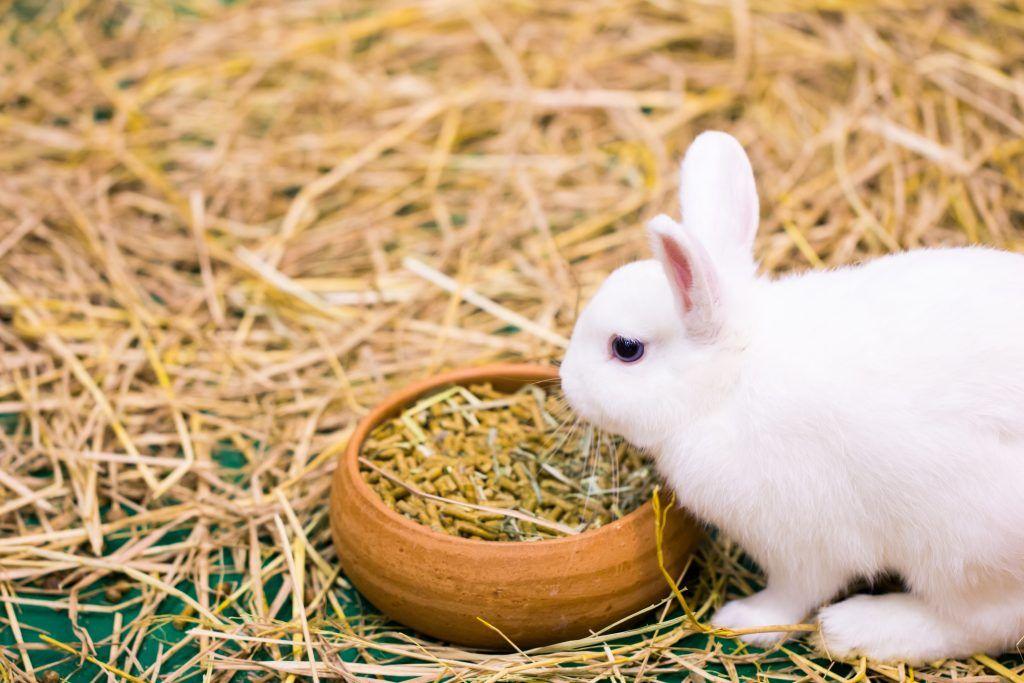
Do not forget about the importance of timely replacement of water and monitoring its quality. The drinker must be kept perfectly clean.
Important! In no case should potatoes, white and red cabbage, plums, citrus fruits, pastries and milk (for adults) be added to the feed.
Hygiene and bathing
Rabbits are very clean and can groom each other when paired.
Hygiene procedures include:
- bathing in cases of heavy pollution (diarrhea);
- cutting nails up to 2 times a month;
- combing fur;
- examining the teeth and adding solid food in case of insufficient grinding.

Important! Bathing rabbits is done only in extreme cases. After the procedure, the animal must be wiped and allowed to dry in a place protected from a draft in order to avoid blowing and cold.
Training and games
Decorative rabbits are very mobile and lend themselves well to training, perceiving tasks as a game. To train an animal, you need to use incentive methods, in no case frightening or harming the pet. Training begins 2 months after purchase, when the rabbit gets used to a new place. For apartment maintenance, it is best to start with litter box training.
Diseases and treatment
Dwarf rabbits are demanding about care, violation of which can lead to illness or death of the pet. Decorative breeds have a weak immunity, they need attention and care.
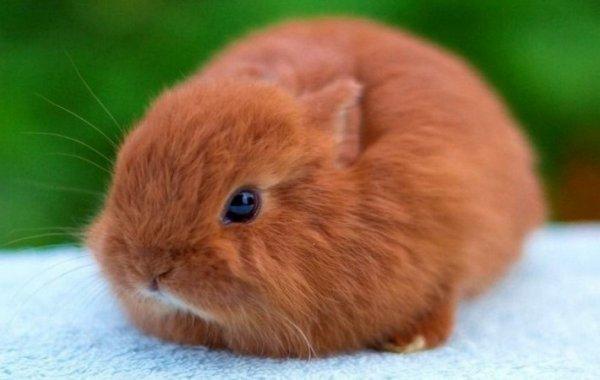
Possible signs of ailments:
- bloating, vomiting;
- constipation;
- loose stools;
- bad breath;
- belching;
- rumbling in the stomach;
- lethargy, fatigue, lethargy;
- blood in the urine;
- tearing, pus in the eyes;
- bald spots in the coat, skin irritation;
- sneezing, coughing;
- temperature.
The breeder should have at hand the number of a good veterinary clinic, whose specialists have experience working with rabbits. If one or more symptoms appear, the animal should be examined as soon as possible.
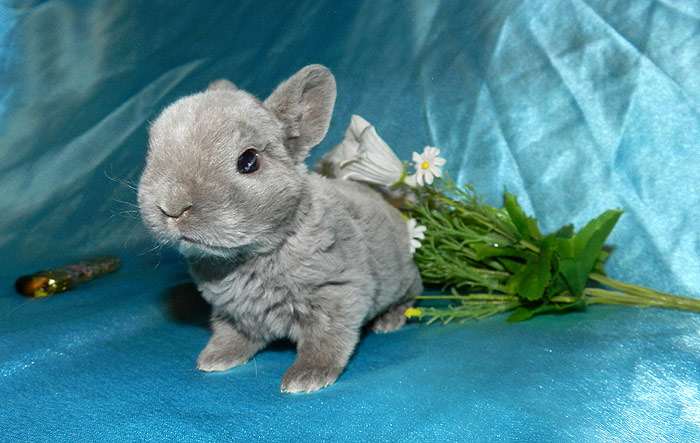
Vaccination
Vaccination allows you to protect your pet from the development of diseases that can lead to death or irreversible consequences for the rabbit's health. First of all, rollers are vaccinated against:
- rabies;
- salmonellosis;
- listeriosis;
- myxomatosis;
- VGBK (viral hemorrhagic disease).
The procedures are carried out already at the 6th week of a rabbit's life in a veterinary clinic. Before vaccination, a weekly preparation of the animal is required, including the prevention of helminth infestation, monitoring the general condition and lack of bathing.
Sterilization and castration
Neutering and neutering rabbits is an important procedure for dwarf breeds of rabbits bought for living in an apartment. The operation has a beneficial effect on the duration and quality of the crawl's life.

The advantages and disadvantages of sterilization:
| Benefits | disadvantages |
| Increased life expectancy. | Hormonal disbalance. |
| Elimination of the risk of unwanted pregnancy in females (if the owner has several heterosexual pets). | Stress. |
| Elimination of the risk of periodic malfunction of the endocrine system and the state of "false pregnancy". | The need for extra care. |
| Reducing the risk of developing cancer. | Financial costs and search for a specialist. |
| Reduced aggression. | |
| Rabbits (both males and females) do not mark territory. |
Sterilization of rabbits is carried out when the animals reach six months of age.
How to properly pick up a rabbit
A rabbit is a living creature that, like a person, can be hurt or uncomfortable.
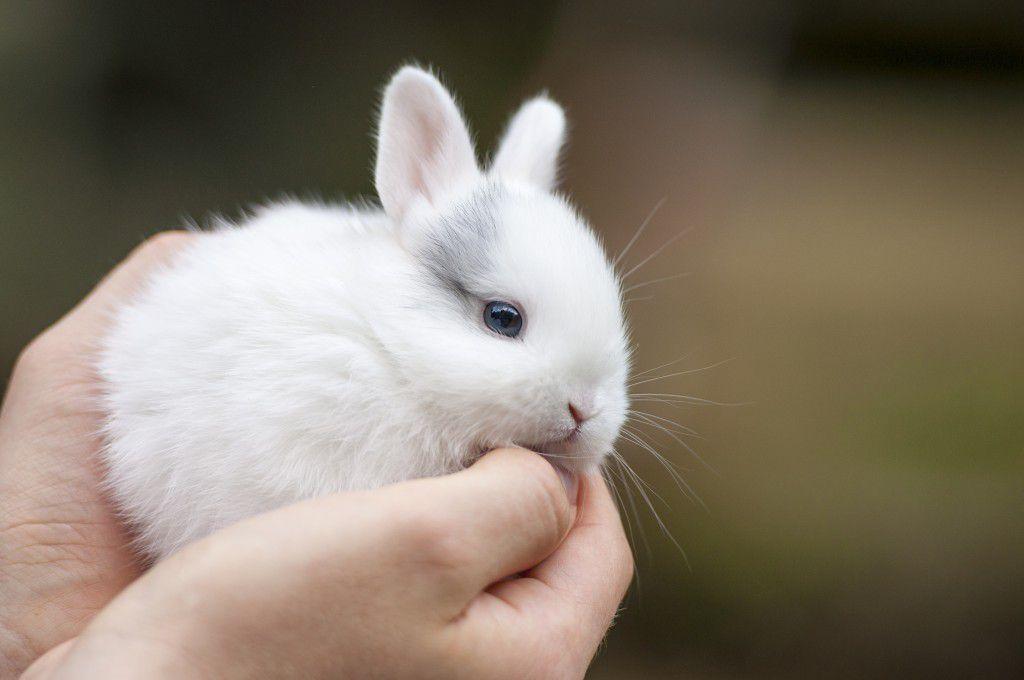
Correct hand position:
- One hand gently wraps around the chest, the other supports under the hind legs.
- The front half of the body and the head are higher than the back (otherwise the animal will escape).
- Let the shy rabbit hide its muzzle under its armpit.
- To transfer to another person, the rabbit must be lowered onto a horizontal surface and held until it is gently picked up. When transmitted in the air, there is a risk of the animal falling and subsequent injury.
The animal should feel confident and comfortable. If the rabbit is afraid or nervous, it is better to let the animal go or to squat while waiting for it to calm down.
Important! After meeting the owner, the rabbit takes time to get used to and trust the person. To speed up this process, you need to regularly take the animal in your arms for a short time and release it if the animal starts to get nervous. After each workout, the rabbit is given a treat.
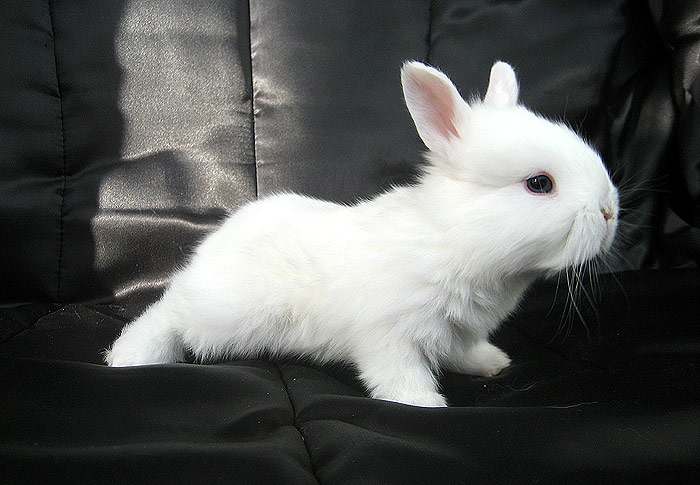
Breeding dwarf rabbits
Dwarf rabbits with a good pedigree participate in exhibitions and are a good investment for breeding and creating their own nursery.It is important to remember that animal breeding is a big responsibility that requires experience and patience on the part of the owner.
Breeding features of rabbits:
- the age of puberty - from 6-9 months;
- the number of rabbits in the litter is up to 7 individuals;
- gestational age - 31 days;
- after giving birth, the female needs rest, frequent childbirth badly affects her health and the condition of her offspring;
- during pregnancy and lactation, the female needs more nutrition than at normal time;
- a rabbit with offspring should have a warm, protected nest.
If breeding rabbits is not the goal of acquiring an animal, it is better to resort to sterilization. The animal does not feel discomfort, and existence together with a person becomes much calmer.

